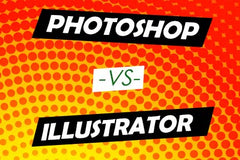Screen printing is such a versatile medium. There are so many things that you can print on. Mugs, t-shirts, paper, skateboards, and so many more things can all be printed on with screen printing.
Today we are focusing on wood. Decorative wood signs are everywhere. They are a great money maker. Craft people are well aware of this. They are also well aware of their profit potential. Adding wood screen printing to your business makes sense and can make you some money. Let’s see how it is really done.
The Wood Matters for Screen Printing
Getting a great print on a piece of wood depends on how smooth or coarse the wood is. Evaluate the piece of wood that you are going to print. Determine if the wood is coarse or fine (smooth). This will help in deciding what you can print on it.
You can print high detail (halftones) images on wood surfaces if the wood is fine grain. To print on a fine grain surface you need a higher mesh count. This will allow the detail of the image to come through.
Course wood does not lend itself well to fine details. Think large letters or images without fine details. On a coarse piece of wood you need a lower mesh count. This will allow the mesh to flood the ink and sink into the wood.
Screen printing on Wood Requires Off Contact
When printing on wood ensure that the screen does not touch the surface of the wood. The screen must be off contact. For an explanation of off contact, check out our blog post What is Off Contact Screen Printing. The post discusses all there is to know about off contact screen printing.
For coarse wood lay the screen directly on the wood. If using a fine grain wood then use off contact. The screen needs to be about ⅛” off contact. It is important for the screen to snap back after printing. This will give a sharper print.
Use Water Based Ink for Wood Screen Printing
It is preferable to use a water based ink because it will seep into the wood. Plastisol ink is not recommended because the ink can peel off easily. Make sure the wood is not coated with some form of lacquer. This will prevent the ink from attaching to the wood. The wood must be uncoated.
Rough grain wood prints require a lot more ink than with a finer grain. Flood the screen a number of times and then print. Use moderate pressure. With a fine print flood the screen thoroughly and then when printing it there will only be one shot at printing it. So make sure it is good.
After printing the print onto the wood, remove the screen with one smooth motion.
Curing the Ink on Wood Prints
When printing has been completed simply place it in a conveyor dryer. Set the temperature to around 275°F and run it through a couple of times. Another option is to add a catalyst to the water based ink and let the wood air dry. Read the blog post on curing ink for more information.
The Final Word On Screen Printing On Wood
Screen printing on wood is not difficult. This technique can add new products or even a new income stream to any screen printers business. Wood products make great gifts. They are decorative and durable. They are perfect for Christmas or Halloween. Businesses use wood signs all the time to advertise their business. There are so many uses for wood signs. Start printing on wood now.




Leave a comment